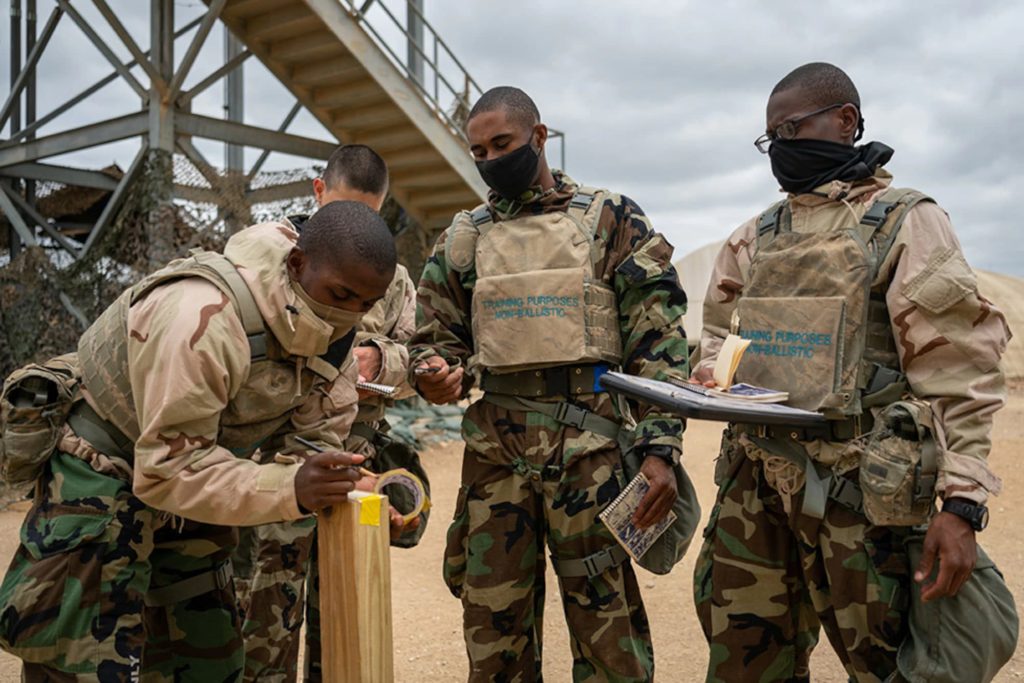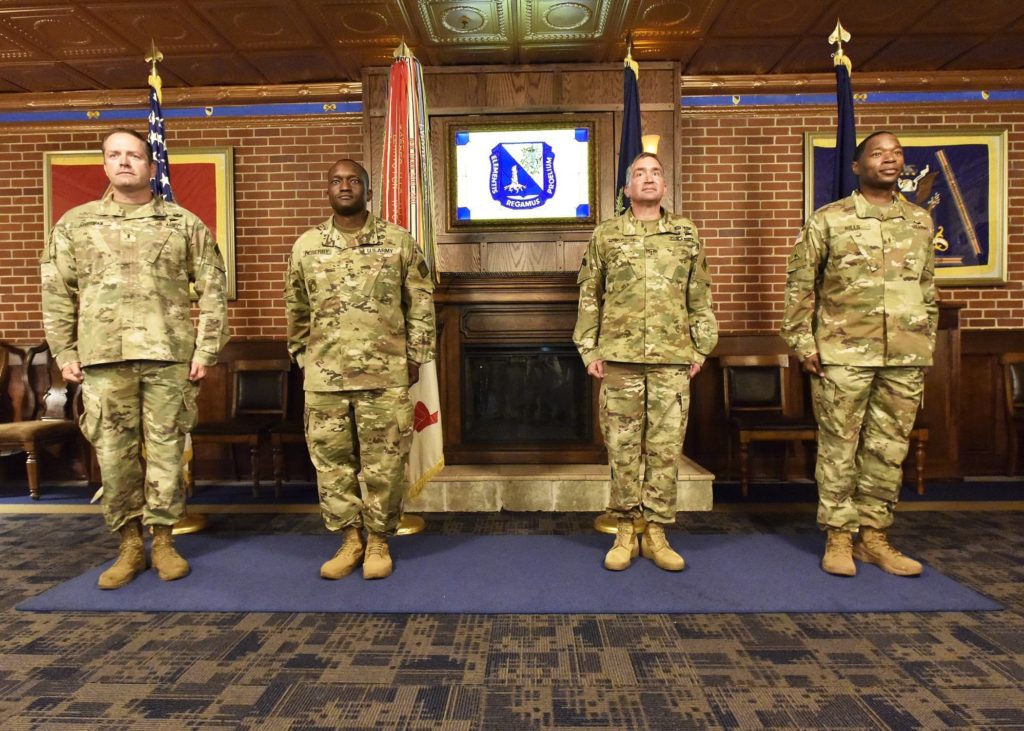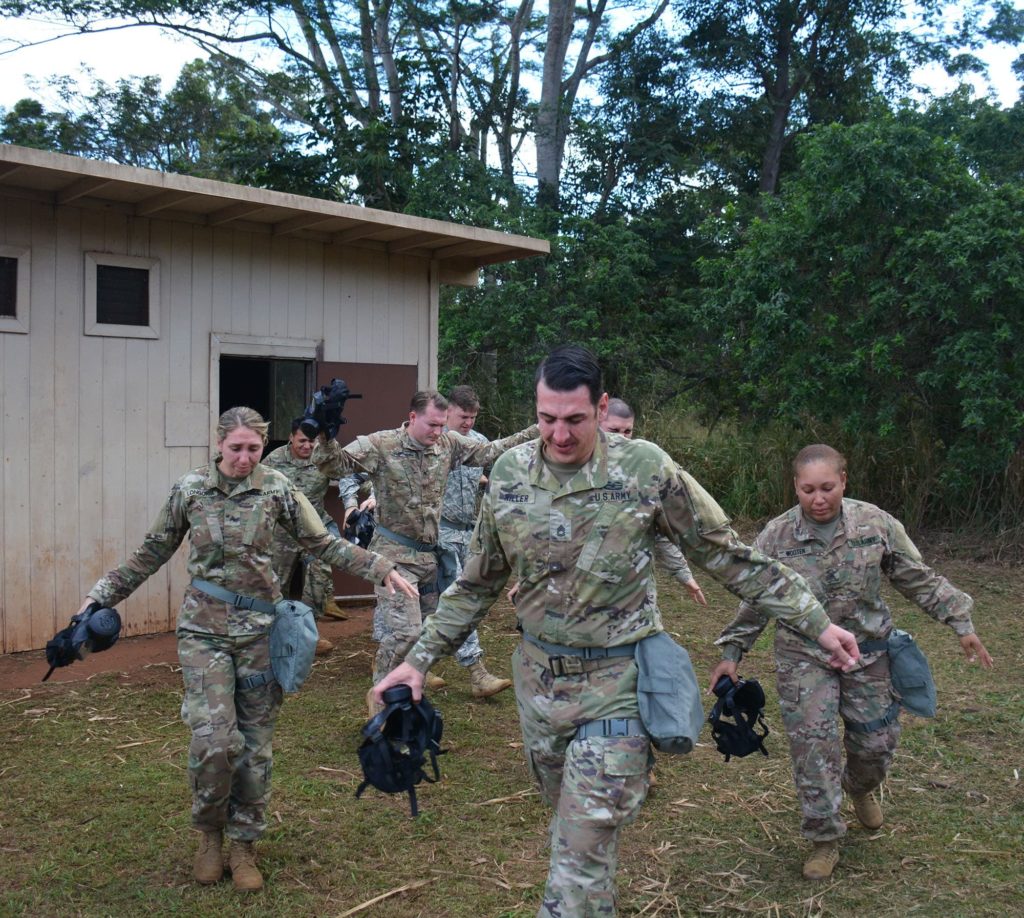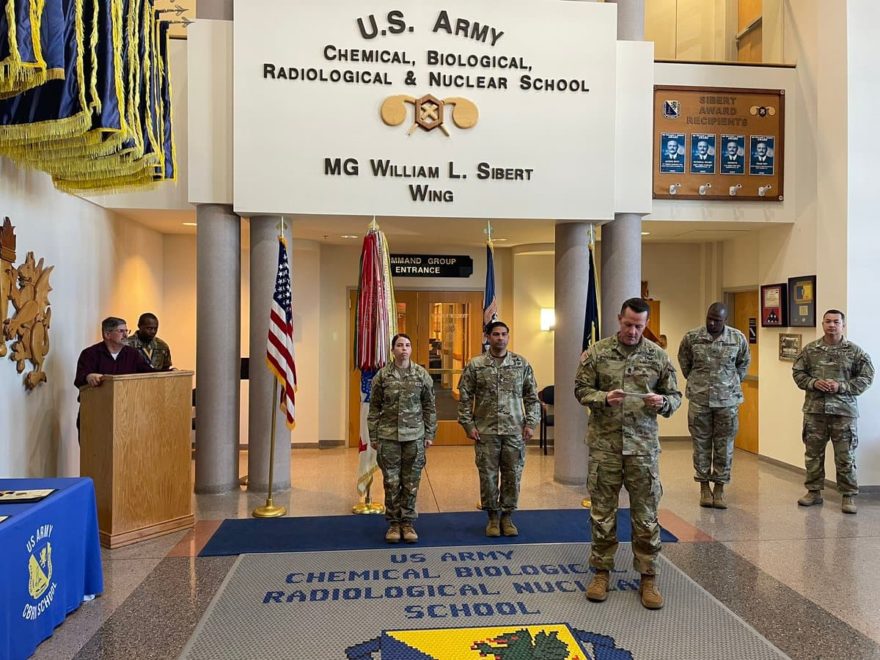The United States Army CBRN School (USACBRNS), located at Fort Leonard Wood, Missouri, is a primary American training school specializing in military Chemical, Biological, Radiological, and Nuclear defense.
The school is responsible for the leadership development of Chemical Corps Soldiers. It also trains non-commissioned officers and leaders from the other armed services and international officers.
The United States Army Chemical, Biological, Radiological, and Nuclear School (USACBRNS) is the primary American military training institution specializing in CBRN defense. The school is located at Fort Leonard Wood, Missouri.
The school is home to the Chemical Corps Regiment and provides specialized training for officers and noncommissioned officers. The Chemical Corps Regiment produces technically and tactically proficient Soldiers who can defend the nation from threats of nuclear, chemical, biological, radiation, and other weaponized agents.
After basic training, the Army CBRN school takes a new batch of students through advanced individual training (AIT), the first step in becoming a CBRN specialist. The AIT program is an 11-week course designed to give Soldiers the foundation they need to enter their first unit of assignment after graduation.
During their time in AIT, Soldiers will train on various CBRN equipment, learn how to decontaminate vehicles, and perform other basic tasks necessary for their MOS. They also complete a field training exercise (FTX) that simulates an emergency situation where they respond to a CBRN threat.
Once they graduate from AIT, Soldiers will go to the Chemical Defense Training Facility (CDTF) at Fort Leonard Wood for hands-on, live toxic CBRN defense training. This training helps build confidence in CBRN warfare specialists and allows them to overcome fears of operating in a toxic chemical environment.
The CDTF is a state-of-the-art facility that features realistic scenarios to challenge the senses and skills of future Joint Force leaders. It reopened in November 2007 after being closed for six months for upgrades. Since 1987, the CDTF has trained more than 75,000 military and DOD civilian personnel from 26 countries while maintaining a perfect safety record.
How long does it take to become a CBRN specialist?

As a CBRN specialist, you will help protect the Army and the United States from the threat of chemical, biological, radiological, and nuclear (CBRN) weapons of mass destruction. You’ll also decontaminate hazardous materials, respond to disasters, and train others on the proper response to these hazards.
Upon completion of a chemical warfare specialist course, you’ll be assigned to a unit for three years, where you will build your skills in your occupational specialty. Your assignments are likely to be in a chemical reconnaissance team, a biological exploitation analysis center, or a CBRN dismounted reconnaissance unit.
You’ll be responsible for training and directing soldiers in the use of detection/decontamination equipment and CBRN defense equipment like NBC masks, protective gear, and specialized suits. You’ll also be accountable for ensuring that requisite CBRN material is on hand or on requisition and in serviceable condition.
CBRN specialists are also responsible for conducting quarterly unit assessments of CBRN defense operations and training unit personnel on all aspects of CBRN defense. Depending on the unit’s needs, you may be responsible for providing CBRN training to other Soldiers and civilian first responders.
As a CBRN specialist, you’ll be under high pressure to keep your team and the people they protect safe and secure. That means you’ll need to be physically strong and able to handle the rigors of decontamination. As a result, you’ll have to wear a full set of personal protection equipment and be careful about your rest periods.
How do I get into CBRN?

The United States Army Chemical, Biological, Radiological, and Nuclear (CBRN) School is the principal training facility for the Army’s CBRN defense community. The school is located on Fort Leonard Wood, Missouri.
The CBRN School provides leadership training for the entire command and teaches soldiers how to survive in a contaminated environment. It also supports the Joint CBRN medical faculty and develops doctrine for operational CBRN operations.
Upon completion of Basic Combat Training, Soldiers attend an Advanced Individual Training course. This is 10 weeks of classroom and field training.
Students learn how to defend against all weapons of mass destruction, including chemicals, nuclear, biological, and radiological hazards. They also learn decontamination procedures in case of a WMD attack.
This very demanding job requires a lot of dedication and hard work. Many former CBRN specialists say it’s a good career choice and an opportunity to be part of a unit dealing with real-world problems.
The Army is trying to change the way they do their CBRN training. They are changing it from every 36 months to 18 months.
One reason for the update is that Airmen are required to take CBRN survival skills training more often because they will be in an area where the chemical threat level is higher than usual.
The course is about three hours long and teaches a series of procedures and equipment that an Airman needs to know to survive a CBRN attack. Then, students are put in full Mission Oriented Protected Posture gear and asked to complete tasks in an attack scenario.
Are CBRN Special Forces?
If you are a soldier interested in CBRN protection, there is no shortage of Army CBRN units around the world. However, there are some that stand out above the rest when it comes to training, knowledge, equipment, and overall capability.
For example, the Czech Republic is home to one of NATO’s CBRN Defense Battalion staffed entirely by NBC specialists. This battalion patrols NATO territory and monitors the air for nuclear, biological, and chemical threats.
The Russian military also has a large CBRN unit. These troops are known as CBRN Protection Troops and are equipped with a variety of specialized weapons, vehicles, and other equipment.
This includes the TOS-2 Tosochka multiple rocket launcher, UTM-80M decontamination vehicle, ARS-14KM mobile refueling stations, MKA pathogenic analysis systems, and other CBRN detection and response tools. They can be transported via Il-76 aircraft to a remote site and can carry out decontamination operations quickly.
There are also a handful of other countries that have dedicated CBRN forces. For instance, the UK has a CBRN unit.
The US Army’s 20th CBRN Command, located at Aberdeen Proving Ground in Maryland, is home to 75 percent of the Active Duty Army’s CBRN specialists and Explosive Ordnance Disposal technicians. This group is responsible for combating the world’s most dangerous hazards, including chemical, radiological, and nuclear (CBRN) agents and explosives. The command is composed of several specialized CBRN teams, such as the 1st Area Medical Laboratory and five Weapons of Mass Destruction Coordination Teams.
Where do CBRN get stationed?

CBRN get stationed in a variety of different places. They can be assigned to a Chemical Company, where they perform CBRN duties, or they may be assigned to a Non-Chemical unit, which means they work in a normal military unit without doing any CBRN duties.
The United States Army has a number of CBRN units, and most are located in the United States. They are called 20th CBRNE Command and perform various tasks such as HAZMAT transportation; decontamination; munitions destruction; threat detection; and sampling.
These are the people that protect you, your family, and your community. They are some of the best-trained, most equipped, and most prepared soldiers in the world.
They use the most advanced technology and equipment in their line of work, such as CM-7M Military Gas Masks for optimal protection in toxic environments, BTR-80 armored vehicles, and the latest NBC equipment. Their ability to respond quickly and effectively is what makes them some of the most important troops in the world.
Soldiers in the 434th Chemical Company, based in Hastings and Red Wing, Minnesota, recently deployed to Kuwait as part of Operation Spartan Shield and Inherent Resolve in the U.S. Central Command area of operations. These men trained with the United States Navy Chemical Assessment Response Team to detect, mitigate and decontaminate multiple hazards. This training helped them prepare for their military and civil support missions while deployed.
How much does CBRN specialist make in the Army?
CBRN specialists are enlisted soldiers in the Army who protect the United States from weapons of mass destruction, including chemical, biological, radiological, and nuclear ones. Their duties include reconnaissance missions, conducting x-rays, decontamination, and other tasks to stop WMDs before they can do any damage.
These skills are highly sought-after and can help you land a job in the military, with Homeland Security, or any other civil defense agency. In addition, the military offers an enlistment bonus of up to $9,000 for those who become specialists, as explained by Army.
During your training as a chemical specialist, you learn about protective gear and how to detect weapons of mass destruction. You also learn about hazardous materials and how to manage those substances safely.
Your salary as a CBRN specialist will depend on your skill level, education, certifications, and years of experience. Your pay can be hourly, weekly, or monthly depending on your position and company.
According to ZipRecruiter’s data, a CBRN specialist makes an average of $26,007. This is lower than the national average but can still be a rewarding career choice for those who want to earn more than the minimum wage.
You can find a high-paying job as a CBRN specialist in many cities across the United States. However, the top 10 cities where this career pays more than the average have a higher cost of living.
